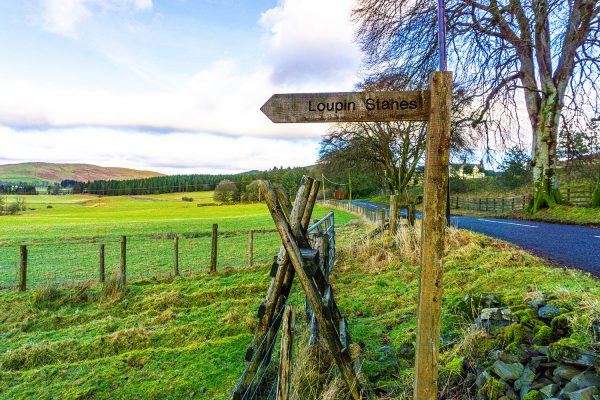The Loupin' Stanes
Over the years there has been debate whether the stones in the fields between the older and the younger circles are "accidentals" or have been placed there as "pointers" on an avenue leading from one to the other.
1. Boonies: A Romano-British farmstead
2. Bailiehill: A Magnificent hill citadel
3. The Knowe: A fortlet, farm or fortified croft
4. Castle O’er: The most superb of the Esk Valley hill forts
5. Over Rig: A unique and perplexing site – fascinating but mysterious
6. Bessie’s Hill: A fort and enclosure
7. The Loupin’ Stanes: A small but impressive stone ring
8. The Girdle Stanes: A large stone ring
9. King Schaw’s Grave: A burial kist, once buried under a vast cairn
This is an oval ring of twelve stones with the “entrance” between the two tallest and largest stones so that the approach was from down the valley, from the southwest. The habit of the local lads of “louping” from the one to the other of the two great stones was abandoned after a leg was broken: please don’t try it!
Its longest diameter is about 18metres, much smaller than Girdle Stanes.
Note that the base or “platform” of the circle is fairly level and somewhat raised above the surrounding sloping ground. Some archaeologists suggest that this platform is what remains of a low cairn, but this effect may just be because the area of the circle was left unploughed and perhaps because stones turned up when ploughing were dumped there.
As you walk from Loupin’ Stanes to Girdle Stanes, look over the Esk to see the old cemetery sited inside an ancient earthwork.
Over the years there has been debate whether the stones in the fields between the older and the younger circles are “accidentals” or have been placed there as “pointers” on an avenue leading from one to the other. Some observers have claimed to detect the remains of other stone circles on the gentle slopes between the two: what do you think?








